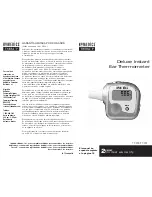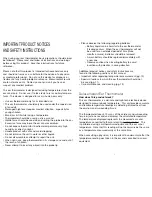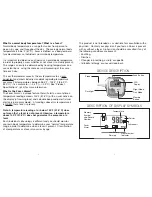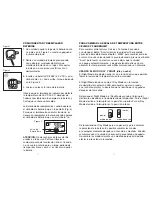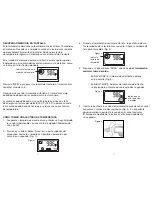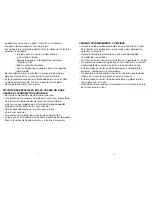
12
11
• Ear temperatures may be influenced by external factors,
including:
• An ear that has been rested upon or covered
• General exposure to extreme hot or cold
temperatures
• Recent bathing or swimming
• Use of hearing aids or ear plugs
It is recommended that measurement occur at least 20 minutes
after these circumstances are no longer present.
• This ear thermometer is for use in human ears only. Do not use
for oral, rectal, or axillary temperature measurement.
SPECIAL SITUATIONS IN WHICH THE EAR
THERMOMETER SHOULD NOT BE USED
• Pain of any kind is noted during use.
• Blood or drainage is present in the external ear canal.
• Deformities of the ear canal or face exist that prohibit the
thermometer from being properly inserted into the ear canal.
• Ear medication or ear drops have been placed in the ear canal.
• Ear infection of any kind is present.
• Individual has been bathing or swimming, as this may lead to
injury of ear tissue, as well as inaccurate readings.
CARE, MAINTENANCE & CLEANING
• Clean the unit carefully with a soft, dry cloth. Do not use
any gas, strong detergent, or solvents to clean the device.
• Clean the waterproof probe with a cotton swab moistened
with alcohol.
• Never attempt to insert any object into the probe tip.
• Do not immerse the unit in water as this will result in damage
to the unit. Waterproof portion of unit is limited to probe tip.
• Do not subject the ear thermometer to extreme temperatures,
humidity, moisture, and direct sunlight.
• Do not disassemble the ear thermometer. If in need of repair,
refer to the warranty section of this manual.
• Do not subject the ear thermometer to extreme shocks (do not
drop on floor).
• When not in use, keep thermometer in its storage case and out of
the reach of children.

